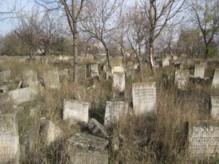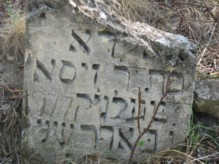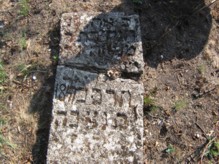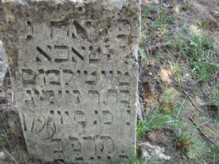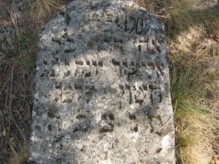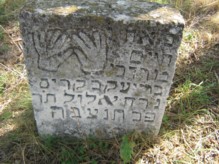(Click your browser's "Back" button to return)
- Moldova Political Map (1993).
- Moldova Google Satellite Map.
- Dubossary Google Map.
- Major Ethnic Groups in Moldova (1993).
Jewish Communities nearby:
Criuleni(4 miles SSW);Maşcăuţi (8 miles W);
Grigoriopol(10 miles SE);
Corjova(12 miles S);
Ivancea(15 miles W);
Orhei(15 miles W);
Petrovca(20 miles SSW);
Krasni Okny, Ukraine(23 miles NE);
Chişinău (24 miles SW);
Voroteţ(25 miles NW);
Străşeni (27 miles WSW);
Frunzivka, Ukraine (28 miles E);
Dişcova (28 miles WNW);
Puţintei (28 miles WNW);
Ofatinţi (29 miles NNW);
Historical Maps
- Pale of Settlement (1835-1917). See border of Kherson and Bessarabia gubernias.
- Ochakov Tatar region of Jedisan. Published in 1790 in Vienna. Dubossary is at the west border of Jedisan region.
- Map of the second Russo-Turkish war of 1788-1790.
- Russian Empire, Bessarabia/Kherson gubernia regions, 1846-1863. Dubossary is.at the far East of the map.
- Moldavian Autonomous Soviet Socialist Republic (1924-1940).
- Kherson gubernia (province) (1800-1833). See #12 - New Dubossary.
- Federation of East European Family History Societies (FEEFHS) historical map of southeast provinces of Russian Empire, 1882. Find Dubossary at the border of Bessarabia, Kherson and Podolia gubernias.
Towns Maps
- Dubossary Town map from site: dubossary.ru. This great "Russian" map allows to search by current street names.
Geography and History
General
DUBOSSARY is a town on the Dniester River in the eastern part of The Republic of Moldova. Founded at the end of the 17th century as a Russian fortress, Dubossary developed as a nearby settlement. The inhabitants were employed in the timber trade and log rafting. Other researchers, first mention Dubossary at the period of the Mongol invasion in the region, 1260-1360. The town was established in XIV century as a capital of one of the Tatar regions. The name Dubossary is from Turkic "Tembosary" or "Dembossary" meaning yellow hills.
From 1360 to 1385, Dubossary was part of the Grand Duchy of Lithuania; from 1385 to 1410, it was part of Poland, from 1410 to 1430; then it went back to the Grand Duchy of Lithuania. From the second part of the 15th century Dubossary belonged to Crimean Khan, and it was part of the Tatar region with several fortified towns which included Dubossary. In the 18th century, Dubossary was a center of a district with 41 localities in the district. At that time, Nogay tatars governed the region, but also living there Velikorossy, Malorossy, Moldavians, Jews, Greeks, and Poles.
Finally after the 1771 Russo-Turkish war it became part of the Russian Empire and became a districttown with 13 smaller towns in Ochakov region.
Dubossary was not part of the Moldova Principality before 1812, and in the 19 century it was not in Bessarabia. It was part of the Russian Empire, Kherson gubernia (principality). Although the history of Dubossary was always influenced by neighboring Moldova.
After 1812, when Russia annexed part of the Moldova Principality, which became Bessarabia, the strategic importance of the border town diminished, until 1918 when Romania annexed Bessarabia.
From 1918 Dubossary was part of Ukraine, Soviet Union. In 1924 the Soviet Union decided to establish the Moldavian Autonomous Soviet Socialist Republic inside the Ukraine Soviet Socialist Republic. The capital of that region was Balta, and later became Tiraspol. Even the majority in that region was not Romanian/Moldovans (only about 30%). The establishment of an autonomous republic was mostly political, in order to tell the world that the USSR did not recognize the annexation of Bessarabia by the Kingdom of Romania.
In 1939, the USSR and Nazi Germany signed a 10-year non-aggression treaty, called the Molotov-Ribbentrop pact. Soon after that Germany occupied part of Poland, and USSR occupied Lithuania, Estonia and Latvia and in 1940 occupied Bessarabia. On August 2, 1940, Dubossary became part of the newly established Moldavian Soviet Socialist Republic, with the capital in Kishinev.
After the Second World War, Dubossary became part of Moldavskaya SSR in the Soviet Union and on September 2, 1990 Dubossary became part of Pridnestrovskaya Moldavskaya Republic also named
Transnistria Republic.
History of Jews in Dubossary
Starting from 18th century or even before, Jews lived in Dubossary and surrounding arears. Theytraded in grain, wine, and prunes. They also grew tobacco. By 1847, there were 2,506 Jews living in Dubossary (about 1,000 in the town itself) and its vicinity, including the towns of Grigoriopol and Ananyev.
In 1897, there were 5,220 Jews in Dubossary, 43% of the total population. In April 1882, a pogrom occurred. Two Jews were killed, and much property was looted and destroyed. In the beginning of the 20th century, the community operated a talmud torah, nine chederim, and four private schools. An attempt to resuscitate the *blood libel was made in 1903. During the civil war of 1918–20 Jewish *self-defense was organized and the community remained relatively free from the pogroms occurring at the time. Thousands of refugees making their way to Romania in 1920–22 passed through the town, and many from Dubossary itself also crossed the border. There were 3,630 Jews in Dubossary in 1926 (81% of the total population), dropping to 2,198 (total population 4,250) in 1939. In the 1930s there were about 400 Jewish artisans organized in nine cooperatives, and 227 farmers raising tobacco, while others worked as laborers and clerks.
 |
For details of Jewish life in Dubossary, please go to Yizkor Book (Dubossary Memorial Book) (Hebrew) Published in Tel-Aviv, Israel, 1965 and translated into English at www.jewishgen.org by Sarah Faerman.
In 1999 the Russian Edition of the book was published. |
 |
Dubossary during the Holocaust
The German/Romanian army occupied Dubossary in mid-July 1941. At that time 3,500 Jews remained there. With the capture of Dubassar, the Einsatzgruppe commandos gathered all the Jews of the district (about 18-20,000) into the town. Among them were Jews who had fled from Besssarabia and Bukovina when the war started. At the end of August a ghetto was set up, and on September 1 the town was annexed to Romanian Transnistria. All except 200 Jews were slaughtered by the commando unit of the SS who followed the conquering army. On September 11, 1941, the Jews were ordered to assemble. By September 28 about 6,000 Jews had been murdered. In September 1943 thousands of Jews were brought to Dubossary from Bessarabia and Moldavia and "liquidated" there. Some managed to join the partisans in the neighborhood. After the liberation of Dubossary on August 14, 1944, the Soviet Commission for Investigation of Nazi Crimes found that about 18,000 Jewish victims were buried in mass graves near the town. Approximately 100 to 150 survivors returned after the war.Members of Einsatzgruppe D shooting Jews, 14/09/1941 in Dubossary.
From September 3, 1941
"Six Jews who refused to serve on the Jewish Council at Dubossary, Ukraine, are publicly hanged.
Later, 600 elderly Jews were driven into Dubossary’s eight synagogues and burned alive when the synagogues were set ablaze."
Find it at
The New Your Times
Gedenkstattenportal zu Orten der Erinnerung in Europa / Dubossary.
28 Video Testimonies of HOLOCAUST SURVIVORS from Dubossary
presented at University of Southern California Shoah Foundation Institute for Visual History and
Education.
Here is a list of 28 people from Dubossary who recorded their testimonies, some of them were in Ghettos, and in concentration camps. Full video you can order from the foundation, but all testimonies are indexed and you can find the names and places mentioned in the video and also see part of it online.
Go to http://vhaonline.usc.edu/search.aspx and if you seatch for Dubossary you will see all of them. For more Information please visit www.college.usc.edu/vhi.
“Dubassar” - Encyclopedia of Jewish Communities in Romania, Volume 1. Published by Yad Vashem, Jerusalem, 1969. Translated at www.jewishgen.org by Shula Laby, M. D. and Morton Laby, M.D.
“Holocaust: FINAL REPORT of the International Commission on the Holocaust in Romania, November 2004.
Dubossary Mass Graves, Memorial

Holocaust Memorial to Victims of fascism, Dubossary, Moldova/Transnistria.
Photographs are courtesy of Ozias Ukshteyn, the Director of Jewish Community of Dubossary, Moldova/Transnistria, 2012.
List of the Jews killed in the autumn of 1941 and buried in the Mass Graves,at a place where now it is a Memorial of Victims of Fascists in Dubossary, Moldova/Transnistria. (18 thousand people were murdered at that place, we collected only 757 families totaling 2984 people's names killed. They were from many towns in Odes'ka oblast, Moldova, Moldova/Transnistria.) Prepared by Ozias Ukshteyn, Director of Dubossary Jewish Community. Translated by Janet Furba, 2012.
JewishGen / Holocaust Database / Jews Killed in 1941 in Dubossary, Moldova/Transnistria. Database include 757 family records with total of 2,984 Jews killed in Dubossary.
Commemoration of Jews killed in Dubossary
| 2007 | ||
|---|---|---|
 |
 |
 |
| 2009 Holocaust Remembrance Day | ||
 |
 |
 |
| 2010 | ||
 |
 |
 |
| 2011 | ||
 |
 |
 |
 |
 |
 |



